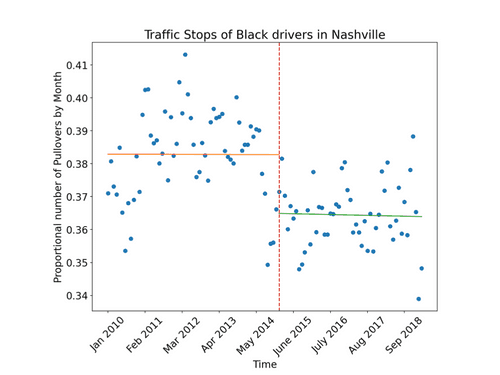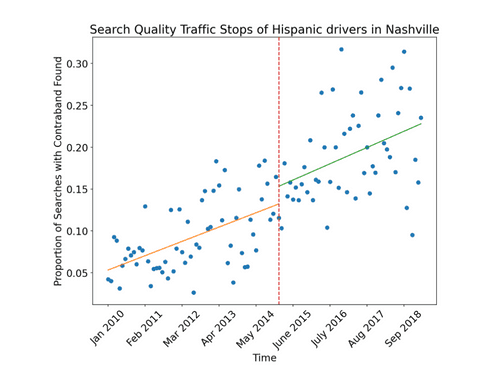Implicit Bias Training Study
Does implicit bias training lead to more equitable policing?
For our statistics class final project, my group and I decided to analytically understand the effectiveness of implicit bias training across different precincts. Specifically, we performed regression discontinuity tests to see if the instantiation of these trainings had an immediate difference.
What we see in the first picture is that in some cities implicit bias training has a large difference. You can clearly see that at the red line (time of training), the proportion of pullovers where the driver was black significantly decreased. In addition, we also looked at what is known as the "hit rate," or the percent of pullovers where an illegal substance is found.
Here we see that the hit rate increases, which is a good thing. It essentially shows that there are far fewer frivolous pull overs. However, these trends simply don't exist for all precincts. In many cities, implicit bias training did not improve the hit rate, and in some cases it got worse. Check out the full paper for a much more thorough analysis. I was really happy to work on this project, because it is a controversial topic which deserves rigorous data analysis rather than just discussion amongst lawmakers. I think we can conclude by saying that some cities have effective implicit bias training, and we should try to replicate their approaches in other cities.

